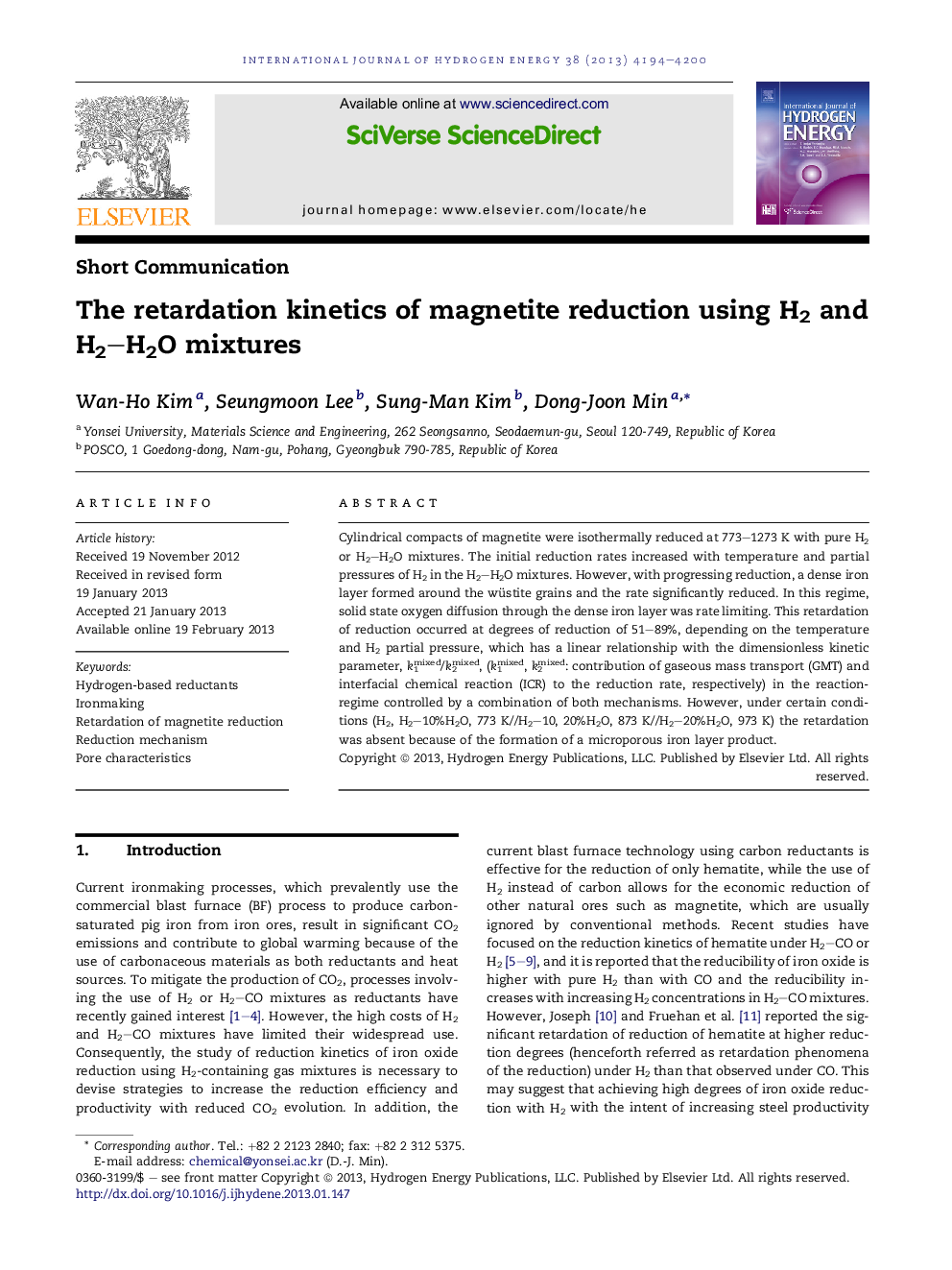| Article ID | Journal | Published Year | Pages | File Type |
|---|---|---|---|---|
| 1281884 | International Journal of Hydrogen Energy | 2013 | 7 Pages |
Cylindrical compacts of magnetite were isothermally reduced at 773–1273 K with pure H2 or H2–H2O mixtures. The initial reduction rates increased with temperature and partial pressures of H2 in the H2–H2O mixtures. However, with progressing reduction, a dense iron layer formed around the wüstite grains and the rate significantly reduced. In this regime, solid state oxygen diffusion through the dense iron layer was rate limiting. This retardation of reduction occurred at degrees of reduction of 51–89%, depending on the temperature and H2 partial pressure, which has a linear relationship with the dimensionless kinetic parameter, k1mixed/k2mixed, (k1mixed, k2mixed: contribution of gaseous mass transport (GMT) and interfacial chemical reaction (ICR) to the reduction rate, respectively) in the reaction-regime controlled by a combination of both mechanisms. However, under certain conditions (H2, H2–10%H2O, 773 K//H2–10, 20%H2O, 873 K//H2–20%H2O, 973 K) the retardation was absent because of the formation of a microporous iron layer product.
► The kinetics of magnetite reduction was investigated with H2 and H2–H2O (g) mixtures. ► The rate of reduction significantly decreased at a critical reduction degree (RCR). ► This retardation was due to the rate limiting by solid state diffusion of oxygen. ► RCR varied with kinetic factors caused by reduction at various conditions. ► Reduction–retardation was absent when microporous product iron layer formed.
